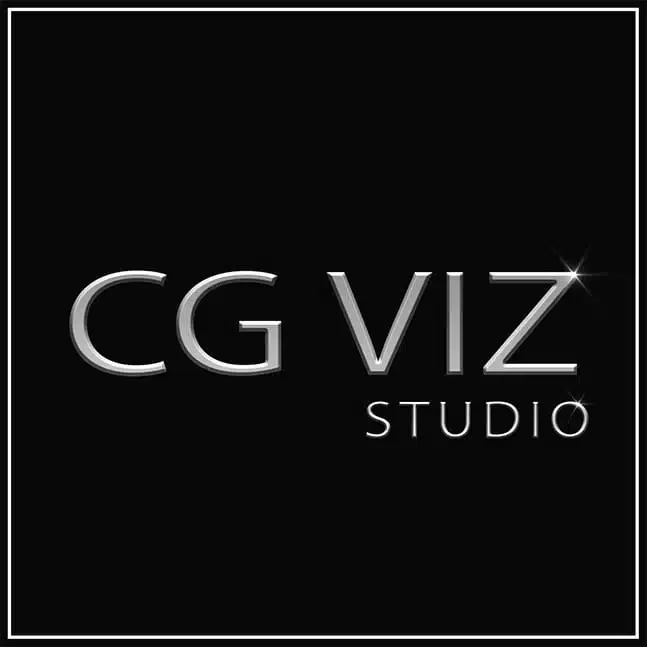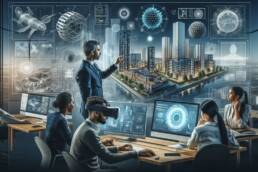In the dynamic field of product design, 3D visualization has emerged as a transformative force, redefining the pre-manufacturing landscape. By leveraging cutting-edge rendering technologies and collaborative tools, companies like CG Viz Studio are setting new standards in how products are visualized before they hit the production line. This article delves into the revolutionary impact of 3D visualization on product development, the latest advancements in rendering technology, real-world success stories, the strategic business advantages it offers, and a forward-looking perspective on its future in manufacturing.
Key Takeaways
- 3D visualization significantly enhances design accuracy and efficiency, enabling designers to refine products before physical prototypes are created.
- Collaborative design processes are facilitated through virtual prototyping, reducing time and costs associated with traditional product development.
- Advancements in 3D rendering, including photorealistic imagery and AI integration, are revolutionizing how products are marketed and visualized.
- Success stories from various industries, like automotive and architectural presentations, showcase the effectiveness of 3D product visualization.
- The integration of 3D configurators and virtual reality into e-commerce and design collaboration represents the next frontier in product visualization.
The Impact of 3D Visualization on Product Development
Enhancing Design Accuracy and Efficiency
In our journey to redefine product development, we’ve embraced 3D visualization as a pivotal tool. It not only enhances design accuracy but also streamlines the efficiency of the entire process. By leveraging the precision of 3D models, we can conduct a comprehensive analysis, identifying both strengths and areas for improvement early in the design phase. This preemptive approach significantly reduces the need for physical prototyping, saving time and resources.
Our collaborative efforts are bolstered by the ability to share high-quality designs swiftly with partners, even before manufacturing commences. This fosters efficient decision-making and ensures that all stakeholders are aligned with the design intent. Here’s how 3D visualization has transformed our workflow:
- Accuracy in design through detailed virtual models
- Elimination of physical sample production
- Swift sharing of designs for collaborative review
- Streamlined decision-making processes
The integration of 3D visualization in product development not only enhances customer satisfaction and brand loyalty but also improves communication with stakeholders. It’s a strategic move that reduces costs by minimizing the need for stacked inventory, thereby improving efficiency and product quality.
As we continue to innovate, the role of 3D visualization in enhancing design accuracy and efficiency becomes increasingly clear. It’s an investment in our future, ensuring that we stay at the forefront of product design and development.
Facilitating Collaborative Design Processes
In our journey to redefine product design, we’ve embraced the power of 3D visualization to foster real-time communication and collaboration among team members. This technology has proven indispensable in eliminating the need for physical prototypes, allowing us to share high-quality designs swiftly with partners before manufacturing begins. The result is a more efficient and collaborative decision-making process.
The integration of various technologies within 3D visualization tools has created a novel interaction paradigm. It’s not just about seeing a design; it’s about experiencing it in a shared virtual space, enhancing the user’s ability to engage with and manipulate the design in a natural and immersive way.
Here’s how 3D visualization is enhancing our collaborative efforts:
- Streamlining manufacturing processes through enhanced design iterations
- Revolutionizing user experience with interactive demos and AR integration
- Fostering a sense of presence and connection beyond traditional video conferencing
By leveraging these advancements, we’re not only improving our workflows but also paving the way for sustainable practices in design and construction.
Reducing Time and Costs with Virtual Prototyping
We’ve witnessed a transformative shift in product design with the advent of virtual prototyping. By eliminating the need for physical samples, we can now share high-quality designs with partners swiftly, enhancing collaboration and expediting decision-making. Virtual prototyping significantly reduces the time and costs associated with traditional methods, allowing for a more agile and cost-effective design process.
The integration of technologies like VR has further revolutionized the field, providing immersive environments to evaluate design qualities before realization. This not only accelerates product development but also enriches the design experience.
Here’s how virtual prototyping streamlines the design-to-production journey:
- Swift iteration of designs without the need for physical models
- Enhanced accuracy in representing the final product
- Collaborative design processes with remote teams
- Immediate identification and resolution of potential design issues
By adopting virtual prototyping, we’re not just improving efficiency; we’re also fostering innovation and enabling a more sustainable approach to product design.
Advancements in 3D Rendering Technologies
From CAD to Photorealistic Imagery
We’ve witnessed a transformative shift from basic CAD designs to stunning photorealistic imagery in product design. This evolution has not only enhanced the visual appeal but also improved the accuracy of the final product. The leap from functional to lifelike visuals has been monumental, allowing designers to convey their concepts more effectively than ever before.
Photorealism in 3D visualization bridges the gap between conceptual design and tangible reality. It enables stakeholders to experience a product before it’s physically produced. Here’s how the process typically unfolds:
- Conceptualization: Starting with a basic CAD model, the design’s form and function are established.
- Detailing: Textures, materials, and lighting are added to bring the model closer to reality.
- Rendering: Advanced software transforms the detailed model into a high-resolution image that’s nearly indistinguishable from a real-life photograph.
By integrating photorealistic imagery into the design process, we’re not just predicting the future; we’re actively shaping it. This approach ensures that every nuance is captured, from the subtle sheen of a surface to the intricate shadows cast by complex geometries.
CG Viz Studio offers high-end 3D visualization services, revolutionizing pre-manufacturing design with advanced techniques. Enhancing design precision, stakeholder engagement, and time-to-market efficiency in modern manufacturing.
Innovations in Animation for Product Marketing
We’ve witnessed a transformative shift in product marketing through the advent of innovative animation techniques. 3D animation has become a cornerstone in presenting products in a dynamic and engaging manner. By leveraging tools like Maya, Adobe After Effects, and Cinema 4D, we can create animations that not only illustrate a product’s features but also tell a compelling story about its use and benefits.
Enhanced realism: The fusion of 2D and 3D animation techniques has led to a new era of hybrid animations, offering a richer visual experience. This blend allows for more creative freedom, breaking the boundaries of traditional animation and providing a canvas for limitless imagination.
Our clients have consistently praised the impact of these animations on their marketing campaigns, noting significant improvements in customer engagement and conversion rates.
The table below showcases the variety of animation services we offer, each tailored to meet the unique needs of our clients:
| Animation Type | Applications | Benefits |
|---|---|---|
| 3D Product Animation | Product Demos, Ads | High Impact |
| Hybrid Animation | Storytelling, Branding | Creativity |
| 3D Automotive Vis. | Vehicle Showcases | Precision |
As we look to the future, we’re excited about the potential of AI in enhancing these animation processes, making them more efficient and even more captivating. The role of animation in product marketing is not just to inform but to mesmerize, and we are at the forefront of this revolution.
The Role of AI in Streamlining 3D Visualization
We are witnessing a transformative era in 3D visualization, where artificial intelligence (AI) is not just an aid but a driving force in enhancing the creative process. Designers can start with a simple 3D model and, using AI, rapidly explore different visual directions and make quick adjustments. This approach results in a more efficient workflow and a significant reduction in the time required to achieve the final design.
AI’s role in 3D visualization extends beyond mere efficiency. It introduces a level of precision and innovation previously unattainable, allowing for the creation of visuals that are both stunning and technically accurate. The integration of AI in rendering software has led to the development of tools that can automatically optimize lighting, textures, and materials, thereby elevating the quality of the final output.
The synergy between AI and 3D visualization is not just about improving existing processes; it’s about reimagining the possibilities of what can be designed and produced.
Moreover, AI facilitates seamless collaboration among teams by enabling real-time updates and feedback, which is crucial in fast-paced design environments. The table below highlights the key benefits of AI in streamlining 3D visualization:
| Benefit | Description |
|---|---|
| Efficiency | Accelerates the design process by automating repetitive tasks. |
| Precision | Enhances the accuracy of visual elements. |
| Innovation | Enables the generation of novel design options. |
| Collaboration | Simplifies the sharing and reviewing of designs. |
As we continue to embrace AI in our design toolkit, we are not only optimizing our workflows but also unlocking new realms of creativity and expression in product visualization.
Case Studies: Success Stories in 3D Product Visualization
Transforming the Automotive Industry
In our journey to revolutionize product design, we’ve seen a profound transformation in the automotive industry. Specializing in photorealistic 3D renderings and animations, we elevate automotive presentations for manufacturers, e-commerce, and marketing with precision and creativity. Our approach has not only enhanced the visual appeal but also improved the overall design process.
Virtual prototyping has become a cornerstone in automotive design, allowing for rapid iteration and testing without the need for physical models. This shift has led to significant cost savings and a reduction in time-to-market for new vehicles. Here’s how the process typically unfolds:
- Initial concept and design ideation
- Creation of detailed 3D models
- Virtual testing and refinement
- High-quality rendering for presentation and marketing
By integrating advanced 3D visualization techniques, we’re not just changing how cars are designed; we’re shaping the future of the automotive experience.
The benefits of this technological leap are clear. Clients now enjoy a more engaging and interactive design process, while manufacturers gain a competitive edge with the ability to quickly adapt to market demands.
Revolutionizing Architectural Presentations
We’ve witnessed a transformative shift in how architectural projects are presented to clients, thanks to the advent of 3D visualization. Architectural visualization is an invaluable tool for architects, enabling them to convey their vision with clarity and precision. By creating immersive experiences, clients can now explore and understand the spatial dynamics of a design before a single stone is laid.
Virtual reality (VR) has taken this a step further, introducing a new scale of immersive interaction. Clients can ‘walk’ through their future homes or offices, experiencing the design in real scale and making informed decisions. This not only enhances the design process but also elevates the client’s experience in the real estate industry.
Our collaboration with CG Viz Studio has been instrumental in achieving high-quality, photorealistic renderings that captivate and engage. Their expertise in 3D visualization services has helped us win more projects and exceed client expectations.
The benefits of 3D architectural visualization extend beyond client presentations. They also improve workflow and communication within design teams, allowing for a more collaborative and efficient design process. Here’s how our approach has evolved:
- Embracing VR for immersive client presentations
- Utilizing 3D renderings for accurate design communication
- Integrating feedback seamlessly through interactive visuals
- Streamlining the approval process with high-fidelity prototypes
Elevating Consumer Goods with High-End Visuals
In our pursuit to elevate consumer goods, we’ve embraced the transformative power of high-end 3D visualization. Boldly redefining the shopping experience, these visuals not only captivate but also provide an immersive understanding of the products. Seamless sharing through high-performance 3D viewers and augmented reality features has become a cornerstone in enhancing customer engagement and driving conversions.
Our commitment to excellence in 3D visualization services is evident in the feedback from our clients. The consistent five-star ratings and testimonials underscore the impact of our work on their sales and marketing campaigns.
Here’s a glimpse of the services that have been pivotal in revolutionizing consumer goods presentations:
- 3D Product Configurator: Bringing products to life with interactive features.
- 3D Room Designer: Allowing real-time design of any space.
- 3D Digital Showroom: Leveling up marketing with virtual showcases.
By integrating tools like WooCommerce and Shopify plugins, we’ve made it easier for businesses to convert traffic into sales, creating personalized shopping experiences that resonate with consumers. The future is bright as we continue to harness the latest in 3D technologies to make a difference in the consumer goods sector.
The Business Benefits of 3D Visualization Services
Improving Client Engagement and Satisfaction
At the heart of our mission, we strive to enhance the way we connect with our clients. 3D visualization services have proven to be a game-changer in this regard. By providing clients with immersive and detailed previews of their products, we’ve seen a significant uptick in engagement levels. Clients are not just spectators but active participants in the design process, thanks to the interactive nature of 3D renders.
Feedback is a critical component of client satisfaction. Our approach involves iterative cycles where client input is valued and integrated, leading to a product that truly resonates with their vision. Here’s how we’ve structured the feedback loop:
- Initial concept presentation with 3D visuals
- Gathering client feedback and suggestions
- Refining the design based on input
- Presenting revised visuals for final approval
This feedback loop ensures that our clients feel heard and involved, fostering a sense of ownership and satisfaction with the final product.
Ultimately, the goal is to deliver not just a visual, but an experience that aligns with our clients’ expectations. The success stories from CG Viz Studio underscore the impact of 3D product visualization on client collaboration, quality control, and the overall enhancement of customer engagement.
Enhancing Brand Presence and Marketing Strategies
In the realm of product design, 3D visualization serves as a powerful tool for enhancing brand presence and marketing strategies. By creating detailed and interactive 3D models, companies can showcase their products in a more engaging and memorable way. This not only captivates potential customers but also sets a brand apart from its competitors, fostering a unique identity in the marketplace.
The integration of 3D visualization into marketing efforts allows for a more dynamic presentation of products. Customers can explore features and customizations virtually, which enriches their understanding and appreciation of the product.
Here are some key benefits of utilizing 3D visualization in marketing:
- It significantly enhances brand identity, recognition, and differentiation in the market.
- Interactive 3D models provide an immersive experience, leading to increased customer engagement.
- High-quality visuals can be used across various platforms, from social media to e-commerce sites, ensuring a consistent brand image.
By leveraging the latest advancements in 3D technology, brands can not only improve their visual appeal but also streamline their marketing processes, ultimately driving sales and customer loyalty.
Streamlining the Sales Cycle with Interactive Visuals
In our journey to revolutionize customer engagement, we’ve embraced the power of interactive visuals to enhance the sales cycle. By integrating 3D product visualization services, we’ve seen a marked improvement in client interactions. Customers can now explore products in a virtual space, customizing features and witnessing the impact of their choices in real-time. This immersive experience not only captivates but also instills confidence in their purchasing decisions.
The integration of AI-driven 3D rendering and interactive product configurators has been a game-changer. It has allowed us to enhance customer experience, increase sales conversion, and reduce product returns.
Here’s how interactive visuals streamline the sales process:
- Providing a detailed and accurate representation of products
- Allowing for immediate feedback and adjustments
- Enabling better communication of product value and functionality
By offering a more engaging and informative shopping experience, we’ve observed a significant uptick in sales conversions. Moreover, the clarity provided by these visuals has led to a reduction in product returns, as customers are more certain of their choices. The financial benefits are clear, with interactive 3D configurators driving revenue growth and cost savings.
The Future of 3D Visualization in Manufacturing
Integrating 3D Configurators into E-commerce
We are witnessing a transformative era in e-commerce, where 3D configurators are not just a novelty but a necessity for staying competitive. These tools empower customers to personalize products to their liking, offering a hands-on digital experience that closely mirrors the physical one.
The integration of 3D configurators into online platforms has been a game-changer, providing interactive shopping experiences that lead to increased sales conversions. Customers can now visualize products in high detail, customize features, and make informed decisions without the need for physical samples. This not only enhances the user experience but also significantly reduces the return rates due to mismatched expectations.
The strategic use of 3D visualization services in marketing is reshaping the way we think about online shopping. It’s not just about displaying products; it’s about engaging customers in a way that was once unimaginable.
Here’s a quick look at the benefits of incorporating 3D configurators into e-commerce:
- Interactive shopping experiences that captivate customers
- Increased sales conversions through better product visualization
- Opportunities for product customization, leading to a more personalized shopping journey
- Reduction in return rates by providing accurate visual representations
By embracing these high-end 3D visualization services, businesses are not only enhancing their marketing strategies but are also offering customers the ability to tailor their purchases like never before.
Virtual Reality and the Evolution of Design Collaboration
As we delve into the realm of virtual reality (VR), we’re witnessing a transformative shift in how designers collaborate and bring their visions to life. VR enables engineers to collaborate and prototype designs by visualizing and modifying 3D models in real-time. This immersive approach not only fosters a more intuitive design process but also bridges the gap between conceptualization and realization.
The integration of VR into design workflows marks a significant leap towards interactive and participatory design experiences. It allows for immediate feedback and alterations, which can be experienced in a lifelike simulation.
By incorporating VR, we’re not just changing the tools we use; we’re redefining the entire collaborative landscape. Designers and clients can now walk through virtual spaces, experiencing and tweaking designs long before physical prototypes are built. This evolution is not only exciting but also indicative of a future where design collaboration is boundless.
Here’s how VR is enhancing the design collaboration process:
- Detecting intentions through body language in collaborative sessions
- Allowing for lifelike simulations and navigable virtual rooms
- Enabling multiuser functionality for simultaneous presence and interaction
The potential of VR in design collaboration is vast, and we’re just scratching the surface. As technology advances, we can expect even more sophisticated tools that will further streamline the design process and enhance creative synergy.
Predicting Trends: The Next Frontier in Product Visualization
As we look to the future, predicting trends in product visualization becomes a pivotal aspect of staying ahead in the competitive market. The integration of artificial intelligence (AI) is not just a buzzword but a transformative force in 3D visualization. AI algorithms are now capable of analyzing vast datasets to forecast design preferences, market demands, and even potential manufacturing challenges before they arise.
The synergy between AI and 3D visualization tools is crafting a new era of predictive analytics in product design, enabling companies to make data-driven decisions that align with future consumer trends.
The following list highlights the key areas where trend prediction is making an impact:
- Tailoring product designs to consumer behavior patterns
- Anticipating material and resource needs
- Streamlining the design-to-manufacturing pipeline
- Enhancing marketing strategies with foresight into customer desires
By harnessing these predictive capabilities, businesses can not only reduce waste and optimize resources but also deliver products that resonate more deeply with their target audience. The future of product design is not just about creating; it’s about foreseeing and shaping consumer experiences with unprecedented precision.
As the manufacturing industry continues to evolve, the role of 3D visualization becomes increasingly critical. High-end 3D visualization services are not just a luxury; they are a necessity for precision, efficiency, and innovation in manufacturing. At CG Viz Studio, we understand the importance of bringing your visions to life with stunning accuracy and detail. Explore our portfolio and discover how we can transform your manufacturing processes. Don’t get left behind in the digital transformation—visit our website today and take the first step towards the future of manufacturing.
Conclusion
The advent of 3D visualization has marked a transformative era in product design, offering an unprecedented level of precision and realism in pre-manufacturing visuals. Companies like CG Viz Studio are at the forefront of this revolution, leveraging cutting-edge technology to create detailed digital models that allow for thorough analysis and refinement before a product ever enters production. The glowing testimonials from clients across various industries underscore the value and impact of these services. As we look to the future, it’s clear that 3D visualization will continue to play a critical role in product development, enabling designers and manufacturers to innovate with confidence and bring their visions to market with greater efficiency and effectiveness.
Frequently Asked Questions
What is 3D product visualization and how does it benefit manufacturers?
3D product visualization is the process of creating digital models and realistic images or animations of products before they are manufactured. It benefits manufacturers by enhancing design accuracy, facilitating collaborative processes, reducing prototyping costs, and enabling better marketing and client engagement.
How has 3D visualization technology evolved in recent years?
Recent advancements have taken 3D visualization from basic CAD models to photorealistic imagery and animations. The integration of AI has further streamlined the visualization process, making it more efficient and accessible.
Can you provide examples of industries that have been transformed by 3D visualization?
Industries such as automotive, architecture, and consumer goods have seen significant transformation. For instance, automotive manufacturers use 3D visualization for detailed previews of vehicle designs, while architects create immersive presentations of buildings before they are constructed.
What are the business advantages of using 3D visualization services?
3D visualization services can improve client engagement and satisfaction, enhance a brand’s marketing strategy, and streamline the sales cycle by providing interactive and immersive visuals that effectively communicate product features and benefits.
What is the future of 3D visualization in the manufacturing industry?
The future of 3D visualization in manufacturing is likely to see increased integration of 3D configurators in e-commerce, the use of virtual reality for collaborative design, and the use of predictive analytics to anticipate market trends and consumer preferences.
How do 3D configurators affect the sales process and customer experience?
3D configurators allow customers to customize products in real-time, enhancing their shopping experience and engagement. This interactive tool can lead to increased sales, as customers can visualize their customizations instantly, leading to more confident purchasing decisions.



